According to the State of Michigan, the total number of COVID cases in Michigan rose to 45,646, an increase of 592 cases from the previous day. This total was equivalent to 460 cases per 100,000 people (Chart 4) on May 7. The five-day rolling average for the total number of COVID cases (Chart 1) reflects a smoother curve and adjusts for fluctuations in testing and/or the quality of reporting or failure to report. That curve continues to trend upward, but the number of new COVID cases identified each day in Southeastern Michigan has been slowly decreasing for nearly a month now. Since April 2 none of the counties in Southeastern Michigan or Detroit have reported more than 100 new daily cases. On May 5 Detroit reported the highest number of new cases at 57 (Chart 3). Note that this five day rolling average causes these daily case and daily death charts to lag two days behind.
Chart 2 reflects how the five-day rolling averages at the County level and for the City of Detroit, and this chart shows a clear leveling off of the total number of COVID cases in Southeastern Michigan. The numbers are continuing to rise, but at a much slower rate. Detroit still has the highest number of reported COVID cases at 9,461 on May 5, with Wayne County following at a reported 7,987 cases. On May 5, the five-day rolling average for the number of COVID cases in Oakland County was 7,551, and Macomb County reported 5,802.
The daily data highlighted in these posts is from Michigan.gov/coronavirus, where data is updated daily at 3 p.m. Historical data were supplied from covidtracking.com, which republishes COVID data from the State.
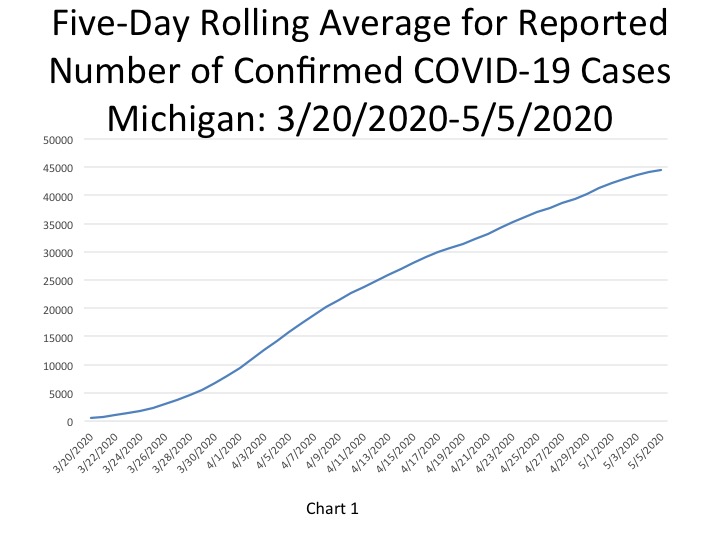
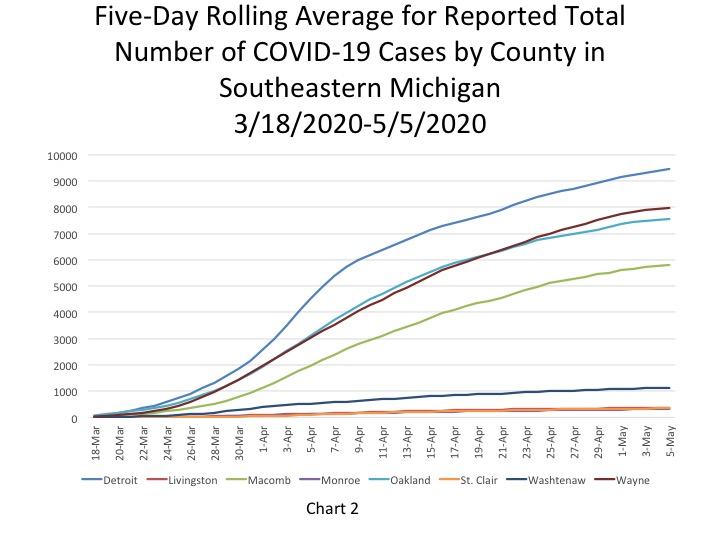
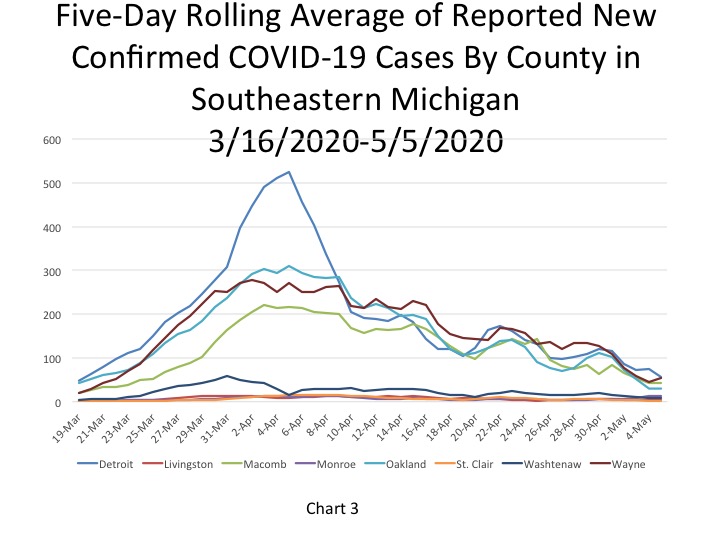
The City of Detroit had 1,422 COVID cases per 100,000 people on May 7, an increase from 1,418 the day before (Chart 4). This is based upon a reported increase of 30 new cases, bringing the total number of COVID cases in Detroit to 9,566. Wayne County reported 1,204 cases per 100,000 people, and Oakland County had 1,133 cases per 100,000 people. These per capita rates were based upon 8,101 total cases for Wayne and 7,624 for Oakland. Macomb County reported 874 cases per 100,000 people, which is based upon 5,876 cases.
Chart 5 shows that Detroit, Monroe and Livingston counties experienced decreases in the number of daily COVID cases per 100,000 people on May 7. On May 7, Detroit reported 7 new daily COVID cases per 100,000 people, a decline from a rate of 17 the day before. Detroit reported 30 new COVID cases on May 7. For Monroe County, its rate dropped to 11 daily COVID cases per 100,000 people, this was equal to 17 new cases. Livingston County’s rate dropped to 1. Macomb, Oakland and Wayne counties all maintained the same per capita rate from May 6 to May 7. The rates were 5,4, and 6 per 100,000 people, respectively. Macomb County reported 44 new cases on May 7, Oakland County reported 51 and Wayne County reported 66.
The State’s per capita rate was 5.9 new cases per 100,000 people, equivalent to 592 new cases. In total, of the 592 new cases, Southeastern Michigan accounted for 221 of them.
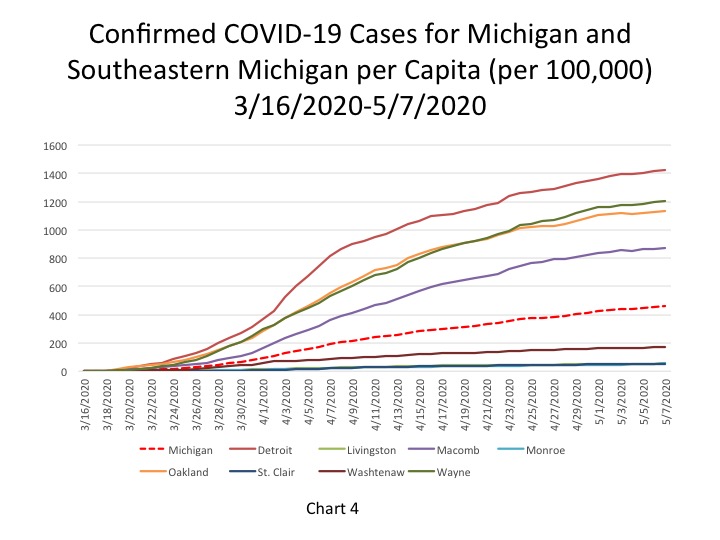
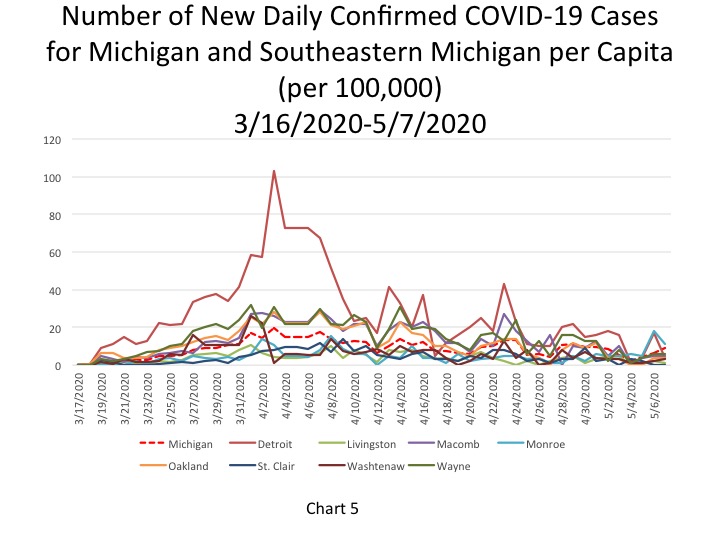
In Chart 6 the five-day rolling average for the number of deaths shows a continuing steady increase (a lagged number of 4,191 deaths, an increase of 65 deaths). The actual reported COVID-19 deaths reached 4,343 on May 7, an increase of 93 deaths from the day prior. Of those 93 deaths, 38 were added to the May 7 total as a result of comparing death certificates and the State’s COVID database. Furthermore, of those 93 additional deaths reported on May 7, 71 were in Southeastern Michigan. Chart 7 portrays how the total number of COVID deaths in Southeastern Michigan continues to increase, but that rate has been gradually declining overall. The rate at which the number of deaths is increasing in Detroit and Wayne County is now roughly equal, though Detroit, where Covid-19 landed first, continues to have a much higher cumulative death total.
Chart 8 shows that the number of daily deaths in Michigan continues to decline, even with the addition of past deaths, discovered through database research. As we have been noting, part of the reason for the State’s decline is due to the decline in the number of COVID deaths in Southeastern Michigan. Although there has been an overall decline, Chart 9 portrays that Macomb County did experience a small increase in the number of daily COVID deaths. Even with the increase, no entity in the region reported more than 13 daily deaths. Wayne County reported the highest at 13 while Detroit reported 12, and Macomb County reported 11. Both Charts 8 and 9 represent five-day rolling average for the number of COVID deaths. Chart 9 makes clear that Detroit, Wayne and Oakland now have steady, substantial daily declines.
Chart 10 portrays the total number of COVID deaths per 100,000 people. As of May 7, the cumulative total of COVID deaths per 100,000 people in Detroit was 171 (representing 1,147 deaths). In Wayne County there were 129 COVID deaths per 100,000 people (865 total deaths), in Oakland County there were 117 deaths per 100,000 people (789 total deaths), and in Macomb County there were 101 COVID deaths per 1000,000 people (678 total). The State of Michigan had 43 COVID deaths per 100,000 people, a rate that continues to remain lower than the four entities discussed above.
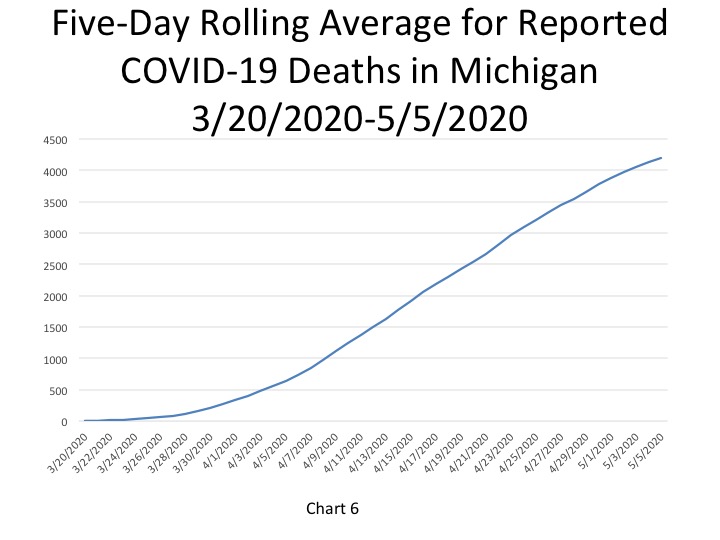
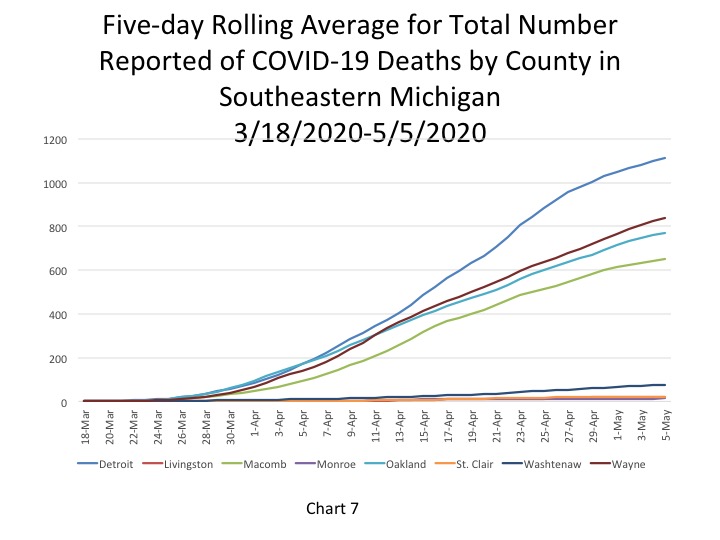
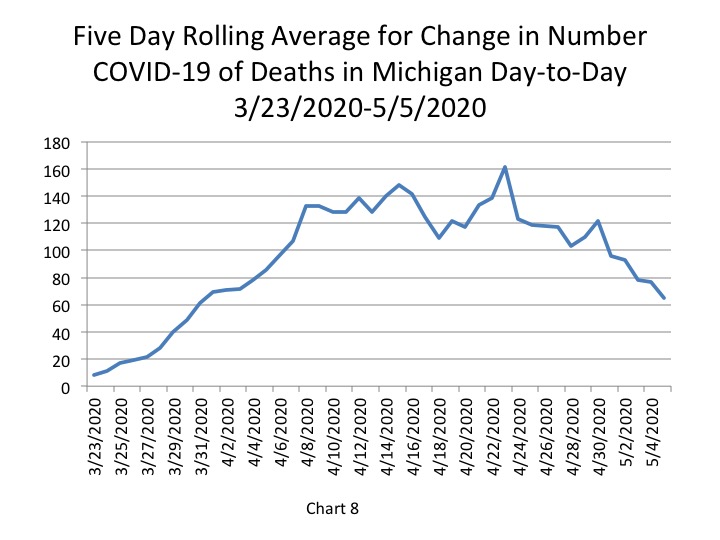
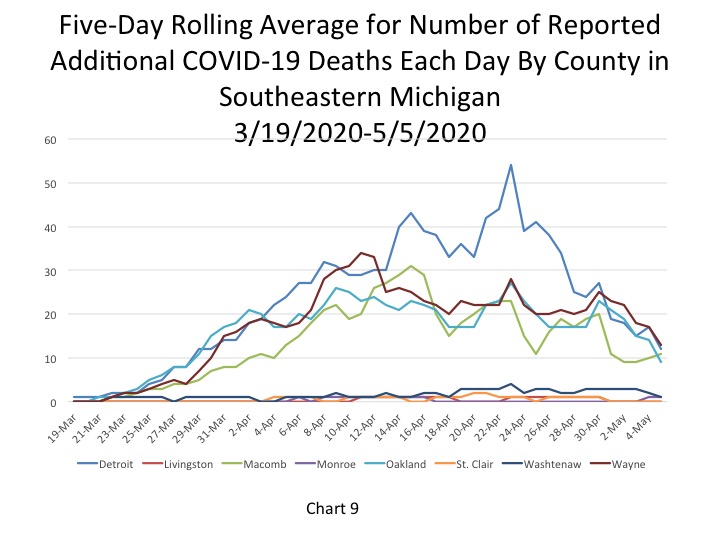
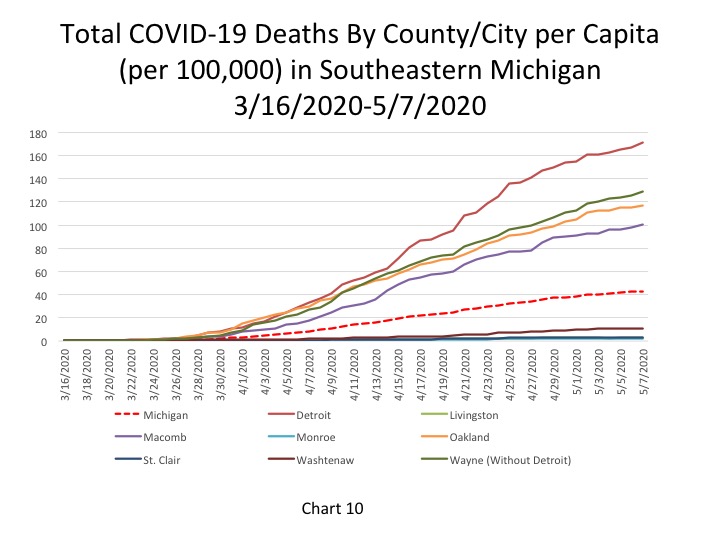
The fatality rates throughout Southeastern Michigan all increased on May 7, with Detroit’s reaching 12 percent. Macomb County continues to have the second highest fatality rate at 11.5 percent. The State’s fatality rate remains under 10 percent; it was reported at 9.5 percent on May 7.
One reason we may be seeing such high fatality rates in Michigan is due to the low testing rates. When only having-presumably-a lower of number confirmed COVID cases than is actually likely due to the limited availability of tests, the fatality rate appears higher because the base comparison is smaller than it might be.
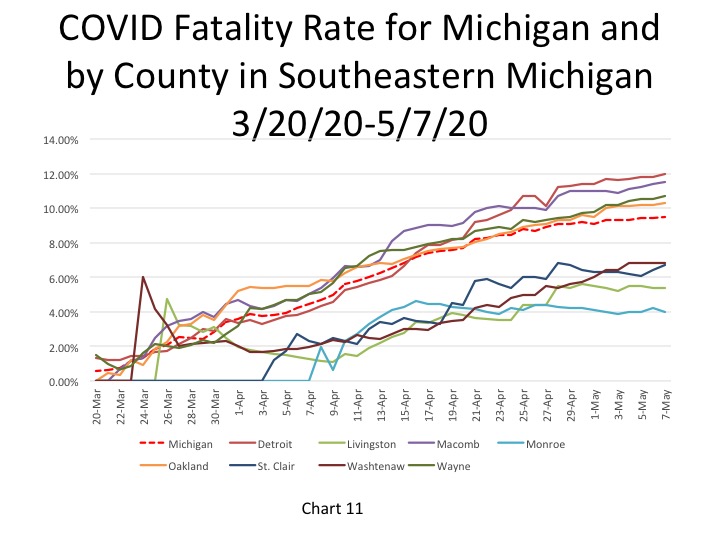
Michigan Gov. Gretchen Whitmer extended the Stay-at-Home Order through May 28 yesterday. While we know the percentage of individuals testing positive for the virus continues to decline, as does the number of daily deaths, Whitmer said an extension was needed to keep the entire population safe as officials prepare to slowly re-open the State. In the next two weeks manufacturing and automotive plants will re-open, sectors that employ thousands. Only leaving home for the necessities, including employment, will help protect against a hard-hitting second wave of the virus.